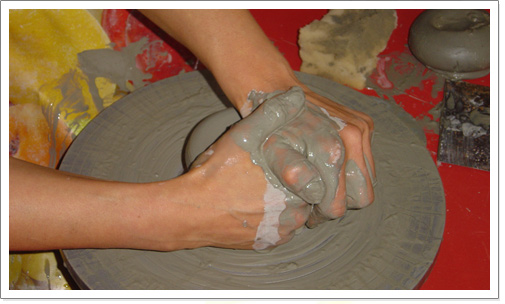
My works are mainly decorated with the Persian lustre technique, an ancient process with Saracen origins and influences from China and Mongolia.
The Arabs brought it to Spain and the technique reached its peak during the era of the Caliphs and subsequently under the reign of Aragon.
In Italy the lustre technique was used for the first time in Master Giorgio’s artisan workshop in the fourteenth century, and it has since been passed down through the generations. It is now used to decorate vases and other household furnishings.
Persian lustre is the result of a special glaze and firing process that uses the reducing atmosphere during cooling.
Unlike other preparations, which often change over time, persian lustre is permanent and unalterable.
The glazes prepared in my workshop consist of metallic salts and gold and silver nitrates.
During the firing, the combination of these components and organic substances put in the kiln (sugar, horse hooves, moth balls, freshly cut grass, pitch) burn and develop fumes in the reducing atmosphere that collide with the items in the kiln, giving them highly unusual reflections and colourings, which differ according to the substances put in the kiln at the moment of reduction.
